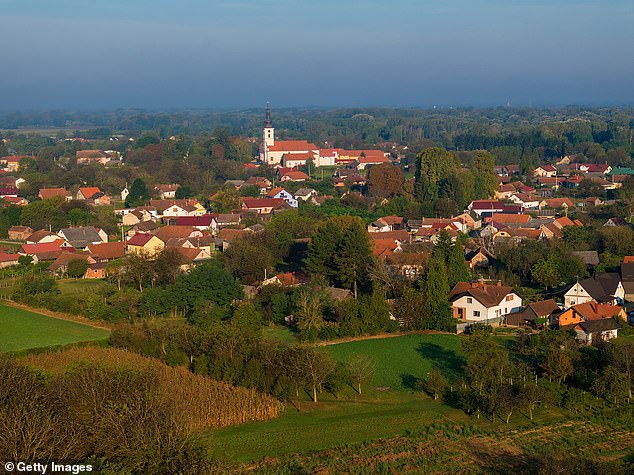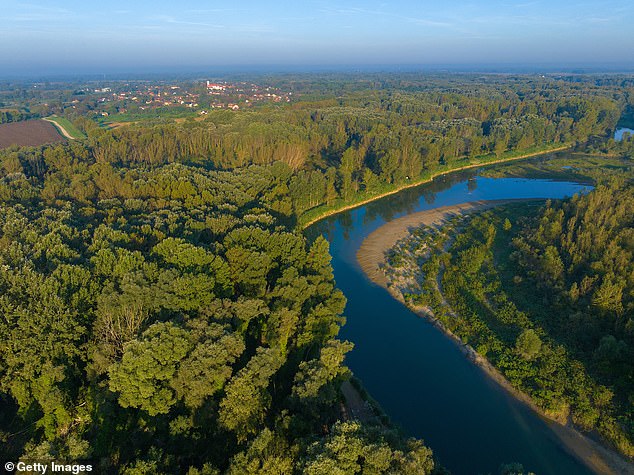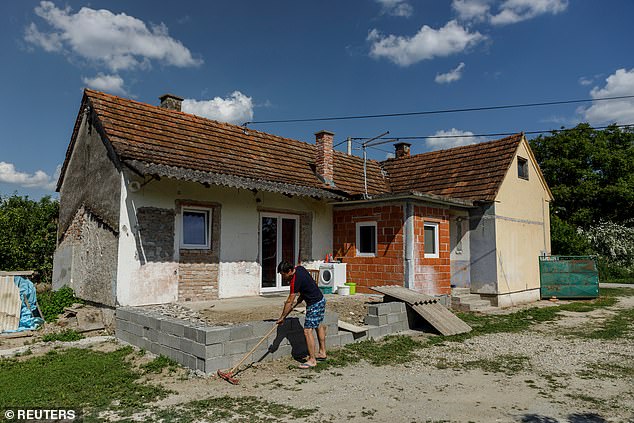Picturesque riverside village in a country loved by British tourists is offering houses for sale for 10 PENCE – but you must be under 45 and the buildings may need some TLC
A riverside village in a European country loved by British tourists is offering houses for sale for as little as 10 pence in a bid to attract people to the area.
Legrad, a city and beauty spot in northern Croatia, started the initiative in 2018 in an effort to get more people settled in the area.
Once the second largest population center in Croatian territory, Legrad is now home to only about 2,000 people, having seen its population decline since the collapse of the Austro-Hungarian Empire in 1918, when it was sidelined by new borders.
In a new bid to attract new residents, government officials announced in January that a new batch of homes are ready for sale for as little as 10p.
However, there are a few catches.
This riverside village in Croatia is offering houses for sale for as little as 10 pence in a bid to attract more people to the area after years of population decline
To be eligible to purchase one of the properties, applicants must be under 45 years of age, be in a marital or non-marital partnership and have no criminal record.
Potential buyers are also not allowed to already own any other property, although it is not clear whether this means in Croatia or elsewhere in the world.
Since the start of the program in 2018, there are now more children than there were fires years ago, according to local media station HRT.
The increase in the past five years even means that the city is building a new childcare facility.
‘A total of five habitable homes have been sold. Three families have already moved, and what we are pleased with is that all three families have welcomed a new member during their move,” Ivan Sabolić, the mayor of Legrad, told HRT.
‘As a result, the number of children in daycare has increased.’
In 2021, Legrad put 19 vacant houses and abandoned building sites up for sale for the price of 1 kuna (the Croatian currency at the time).
Seventeen of these have been sold, according to Reuters.

Once the second largest population center in Croatian territory, Legrad is now home to only about 2,000 people, having seen its population decline since the collapse of the Austro-Hungarian Empire in 1918, when it was sidelined by new borders.

Since the program started in 2018, there are now more children in the city than there were fires years ago, according to local media outlet HRT.
However, the houses were in varying states of disrepair, so to help buyers the local council said it would spend around £2,700 on renovation work at the time.
Some were semi-ruins, without windows and doors, and the walls were covered with mold.
For new residents wanting to buy a private home, the city would cover 20 percent of the price or up to 35,000 kuna, the mayor said in 2021.
‘We have become a border town with few transport links to other places. Since then, the population has been gradually declining,” Mayor Sabolic said at the time.
He said the offer had attracted interest from abroad.
‘After several reports in the media about our campaign, we received questions about houses from distant countries such as Russia, Ukraine, Turkey, Argentina or Colombia.’
However, immigration is complex in Croatia, so according to Sabolic, the city has kept it local in 2021. He said employment opportunities for newcomers include jobs in food production, wood processing and metalworking industries.
Danijel Harmnicar, a young man from northern Croatia with a wife and two small children, took Legrad up on his offer and bought a one-kuna house for his family.
‘It’s much more fun to live in your own place than to be a renter. It is no problem for us to stay here for 15 years, we have no intention of moving,” he said.
It was not immediately clear whether the latest batch of homes would be available to people from abroad.

Danijel Harmnicar, owner of a house bought for 1 HRK, works on a garden in the village of Legrad, Croatia, June 10, 2021. In a new attempt to attract new residents, government officials announced in January that a new batch of houses is ready for sale only June 10, 2021. cents
Legrad is not the first place where cheap houses are offered.
Many towns in Italy sell houses for $1.50, and there are also projects spread across Europe that offer much better houses that need very little renovations.
The mayor of Troina, a medieval town in Sicily with about 8,800 inhabitants, not only pays people to move there but also offers perks such as a free kindergarten and “restyle bonuses” of up to €20,000 for “green” renovations of old buildings. cheap houses.
Potential buyers in Portugal can also purchase bargain properties, with relaxed laws around lending money to foreigners and residency permits for remote workers.
Portugal has homes ready to live in in many built-up areas for less than €46,000, while those willing to venture into the countryside can find a place to live for as little as €9,000.
The municipalities of Castelo Branco in the central west, known for its beautiful urban garden, and Beja in the south, home to a military air base, are among the cheapest in the vibrant country.
And the Spanish National Network of hospitable villages tries to attract digital nomads with workplaces and high-speed internet.
Each village appoints someone to welcome newcomers and help them get set up.
With around 3,000 abandoned villages already, Spain stepped up efforts last year to save other places from following the same path.
